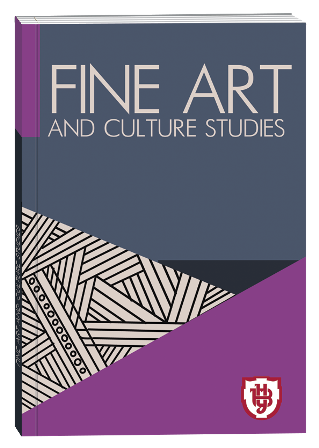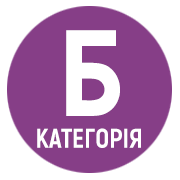THEORETICAL BACKGROUND OF THE STUDY OF TRANSFORMATIONS OF MODERN ART IN THE CONTEXT OF DIGITAL CULTURE
DOI:
https://doi.org/10.32782/facs-2024-2-17Keywords:
art, technology, digital culture, methodology, visual turn, visual studies, media anthropology, cultural analytics.Abstract
Modern science increasingly uses the concepts of "digital culture", "man of digital culture", "digital art" in various contexts, at the same time, the conceptual methodological aspect of the study of transformations of modern art under the influence of the latest media technologies remains underdeveloped. The problems of virtualization of art, the interaction between the artist and the technical tool, as well as new opportunities and dangers of using digital technologies in the creative process need to be reconsidered. The purpose of the article is to conceptualize the theoretical and methodological foundations of the study of transformations of modern art in the context of digital culture. The research methodology is based on the theories of philosophy of technology, media anthropology and cultural analytics, the method of hermeneutic interpretation of texts and general scientific methods of analysis, comparison and synthesis were also used. Scientific novelty. The article defines, systematizes, and analyzes theoretical concepts that form the interdisciplinary basis of the methodological strategy for researching art transformations in the digital era. The conclusion states that the methodological basis of the theoretical analysis of the integration of art and digital technologies is an interdisciplinary synthesis of the concepts of cultural studies, philosophy of technology, media anthropology and cultural analytics. First of all, it is the media cultural anthropology of M. McLuhan, the concept of art in the era of technical reproduction by V. Benjamin, the theory of the interaction of art and technology in the Heidegger’s philosophy, the concept of the pictorial (iconic) turn developed by V.J.T. Mitchell and H. Boehm. In our opinion, a promising scientific approach to the study of this problem is the interdisciplinary method of cultural analytics developed by L. Manovich based on the synthesis of methods of digital humanities, visual studies and big data analysis. This method makes it possible to study, analyze and systematize large arrays of digital images and, on this basis, to identify the main trends in the development of media art, to analyze its specifics in the context of digital culture.
References
Балашова О.О. Net.art і парадокси сучасного мистецтва. Філософська думка. № 6. 2009. С. 79–91.
Беньямін В. Мистецький твір у добу своєї технічної відтворюваности. В. Беньямін. Вибране. Львів : Літопис, 2002. С. 53–97.
Головей В. Інтернет-середовище як соціокультурний простір комунікації і творчості. Cultural and artistic practices: world and Ukrainian context: Scientific monograph. Riga, Latvia : Baltija Publishing, 2023. С. 98–99. DOI: https://doi.org/10.30525/978-9934-26-322-4-5
Головей В. Ю., Ллоид-Маиер О. В. Медіа-мистецтво як феномен сучасної медіаультури. Українська культура: минуле, сучасне, шляхи розвитку. 2022. Випуск 41. С. 60–64. DOI: https://doi.org/ я10.35619/ucpmk. vi40.545
Кастельс М. Інтернет-галактика. Міркування щодо Інтернету, бізнесу і суспільства. Пер. з англ. К. : Ваклер, 2007. 304 с.
Маклюен М. Галактика Гутенберга. Становлення людини друкованої книги. Пер. з англ. К. : Лабораторія, 2024. 384 с.
Пушонкова, О. А. Візуальні дослідження постсучасності: проблема систематизації. Освітній дискурс : Гуманітарні науки : зб. наукових праць. 36 (8–9), 2021. С. 19–30. DOI: 10.33930/ed.2019.5007.36(8-9)-2
Стоян С. Медіа-теорія та медіа-технології у сучасних арт-проектах. Художня культура. Актуальні проблеми. Вип. 15. Ч. 1. 2019. С. 90–94. DOI: 10.31500/1992-5514.15(1).2019.169010
Baudrillard J. Fragments: Conversations with François L'Yvonnet. New York: Routledge, 2003. Edited by Chris Turner. URL: https://books.google.com.ua/books?id=6WXQT4h2hXcC&printsec=front_cover&redir_esc=y (дата звернення : 08.12.2023).
Bell D. An Introduction to Cybercultures. London : Routledge, 2001. 246 рр.
Boehm G. (1994). Die Wiederkehr der Bilder. Was istein Bild?München, 1994. S.11–38.
Grau O., Hoth J., Wandl-Vogt E. (eds.). Digital Art through the Looking Glass: New strategies for archiving, collecting and preserving in Digital Humanities. 2019. 316 рр. URL : http://archiv.ub.uni-heidelberg.de/artdok /6566/1/Grau_Hoth_Wandl_Vogt_Digital _ art_looking_glass_2019.pdf (дата звернення : 20.01.2024).
Groys, Boris. From Image to Image File—and Back: Art in the Age of Digitalization. Art Power. The MIT Press, Cambridge, Massachusetts – London, 2008. Р.83–92.
Heidegger, Martin. The Question Concerning Technology. The Question Concerning Technology and Other Essaus. Translated by William Lovitt. New York & London: Garland Publishing, 1977. 3–35 рр.
Paul, Chr. Digital Art (World of Art). London : Thames & Hudson, 2023. 360 pp.
McLuhan, M. Understanding Media: The Extensions of Man. London: Routledge, 2001. 392 рр.
Manovic, L. Cultural Analytics. The MIT Press, Cambridge, Massachusett, London, England. 2020. 330 pр. URL: https://drive.google.com/file/d/1NuSQcqg Zkj4sToU3EfeFmq1jPC36hU58/view (access : 17.02.2024)
Manovic, L. The Science of Culture? Social Computing, Digital Humanities and Cultural Analytics. The Datafied Society: Studying Culture through Data. Amsterdam University Press, 2017. 55–68 рр. URL: https://www.jstor.org/stable/j.ctt1v2xsqn.8?seq=1 (access : 08.12.2023).
Mitchell, W. J. T. Picture Theory: Essays on Verbal and Visual Representation. University of Chicago Press, 1994. 462 pр.
Mitchell W. J. T. What Do Pictures Want? The Lives and Loves of Images. Chicago : The University of Chicago Press, 2005. 380 p. URL: https://books.google.com.ua/books?id=xhPXV_dAPSwC&pg=PA28&hl=ru&source=gbs_toc_r&cad=1#v=onepage&q&f=false (access : 10.12.2023).
Shevchuk Yu. Conceptual strategies of researching media art as a form of modern cultural practice. Scientific Journal «ScienceRise». 2017. № 10 (39). С. 57–61. DOI: 10.15587/2313-8416.2017.111902







